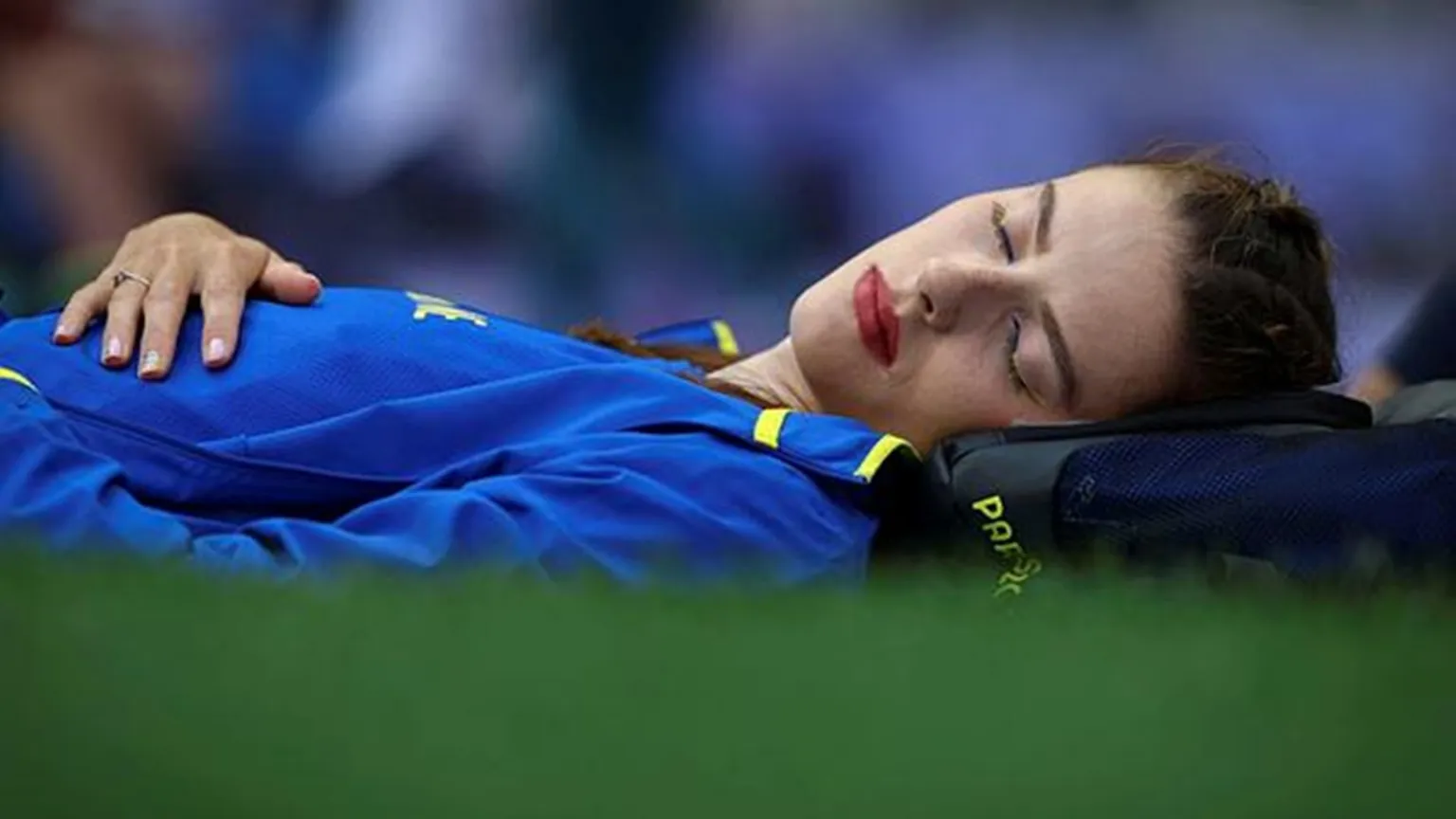Introduction to Yaroslava Mahuchikh’s Achievements
Yaroslava Mahuchikh has established herself as a formidable presence in the realm of high jump. Born in Ukraine, Mahuchikh’s journey in athletics began at a young age, rapidly progressing through the ranks of junior competitions to emerge as one of the sport’s prominent figures. Her career milestones are substantial, marked by an impressive collection of accolades that underscore her exceptional talent and dedication to the sport.
Among her notable achievements, Mahuchikh’s gold medal performance at the Paris Olympics stands out prominently. This triumph at such a prestigious event not only solidified her status as an elite athlete but also served as an inspiration to aspiring sportspersons worldwide. In addition to her Olympic success, Mahuchikh has consistently delivered stellar performances at World Championships and European Championships, where her high jump prowess has earned her multiple podium finishes.
Her career is characterized by a series of record-breaking performances. One of the pivotal moments was when she set the World Junior Record, an accomplishment that highlighted her potential to dominate in senior categories. Furthermore, her consistent ability to clear heights above two meters places her in a distinguished category of high jumpers who have maintained elite status over time. These achievements have not gone unnoticed, earning her recognition and awards from various athletic organizations.
With a career continuously on the ascent, Mahuchikh’s journey is not just about her competitive successes but also the unique and effective preparation strategies she employs. Her downtime routine, in particular, plays a critical role in her high-performance levels. Understanding these facets of her career offers invaluable insights into how an athlete of her caliber maintains such high standards, setting the stage for a deeper exploration of the secret behind her jumps.
The Importance of Downtime in High-Performance Sports
Downtime plays a critical role in high-performance sports, serving as a fundamental component of an athlete’s regimen. For elite athletes like Yaroslava Mahuchikh, adequate rest periods are essential to maintaining peak performance levels. These intervals allow the body to recover, repair, and regenerate, ultimately contributing to sustained athletic excellence. The concept of downtime extends beyond physical rest; it encompasses mental recovery, which is equally vital for optimal performance.
Athletes engage in various activities during these rest periods to mitigate the risks of injuries and overtraining. Adequate sleep, relaxation techniques, and light physical activities such as yoga or stretching are common practices that enhance recovery. Furthermore, these activities facilitate mental preparation, helping athletes maintain focus and reduce performance anxiety. The importance of structured recovery time cannot be overstated, as it enables athletes to manage stress and maintain mental resilience.
The significance of downtime is not exclusive to any single sport. For instance, in tennis, players like Roger Federer have emphasized the importance of rest in their training cycles. Federer has often highlighted taking breaks to prevent burnout and ensure longevity in his career. Similarly, in basketball, LeBron James incorporates meticulous rest schedules, including naps and low-impact activities, to sustain his performance on the court. These examples underscore the universal necessity of downtime across various sports disciplines.
In the context of high-jump athletes like Yaroslava Mahuchikh, downtime enables the delicate balance between rigorous training and effective recovery. Incorporating rest periods strategically within training regimens ensures that athletes can perform at their highest level during competitions. Restoring physical energy and mental clarity is pivotal, enabling athletes to approach each attempt with renewed vigor and focus.
Ultimately, the importance of downtime in high-performance sports is multifaceted. It allows athletes to remain competitive, reduces the likelihood of injuries, and fosters mental well-being. Whether through sleep, relaxation, or light physical activities, recovery time is an indispensable element of an elite athlete’s routine.
Yaroslava’s Unique Downtime Routine: The Sleeping Bag and Sock Changing Ritual
Yaroslava Mahuchikh, the Ukrainian high jump sensation, follows an idiosyncratic downtime routine that has piqued the curiosity of both fans and sports analysts alike. Between her gravity-defying jumps, Yaroslava can often be seen retreating into a sleeping bag, a practice uncommon in the world of high jumpers. This unconventional method, coupled with her ritual of frequently changing her socks, plays a crucial role in maintaining her top-tier performance.
Yaroslava attributes these habits to her need for both physical and psychological comfort. “The sleeping bag helps me to stay warm and relaxed during events, which is essential for maintaining my muscle readiness and focus,” Yaroslava explained in an interview. The act of lying down in a sleeping bag not only keeps her warm but also provides a cocoon-like space where she can mentally prepare for subsequent jumps, thereby reducing anxiety and enhancing concentration.
Her coach, Gennadiy Zuyev, adds, “The sleeping bag technique is something we experimented with and found to be incredibly effective. It ensures that her body stays at an optimal temperature and prevents the weariness that can come from standing or sitting in one place for too long.” This practice has become an integral part of her pre-performance strategy, minimizing the risk of muscle strain and maximizing her spring and energy for each leap.
Equally intriguing is Yaroslava’s habit of changing her socks frequently. This might seem like a trivial matter, but in high jump, precision is key. As sports analyst Igor Petrenko highlights, “Even the slightest discomfort or misstep can affect a jump. Fresh, dry socks reduce the chances of slipping, which is crucial when aiming for those extra centimeters.” Yaroslava herself notes, “Changing my socks makes me feel fresh and confident. It’s a small detail, but it has a big impact on my performance.”
Through these unique routines, Yaroslava Mahuchikh has carved out a distinctive niche for herself in the high jumping community. Her practices not only set her apart but also contribute significantly to her ability to consistently deliver exceptional performances, further solidifying her status as a top-tier athlete.
The Impact of Routine on Performance: Lessons from Yaroslava
Yaroslava Mahuchikh’s dedication to her unique downtime routine provides valuable insights into the correlation between personalized rituals and athletic excellence. The consistency in her activities not only serves as a mental and physical refresher but also establishes a sense of normalcy that aids in optimal performance under high pressure. This meticulous approach underscores the importance of having a tailored downtime strategy as a fundamental aspect of an athlete’s overall training regimen.
One of the key takeaways from Yaroslava’s example is the potential for a personalized routine to enhance focus and reduce stress. Regular engagement in specific, carefully chosen activities can create a soothing sense of predictability and control, crucial for maintaining peak performance levels. By integrating activities that resonate personally, athletes can find balance and rejuvenation, enhancing both their physical capabilities and mental resilience.
For athletes and coaches looking to emulate Yaroslava’s success, the first step is to identify activities that genuinely promote relaxation and joy. It might be reading, meditating, engaging in a hobby, or simply spending time in nature. The goal is to create a downtime routine that not only serves as a psychological break from the rigors of training but also contributes positively to an athlete’s mental well-being.
Implementing these strategies involves setting aside regular, uninterrupted time for these activities, thereby allowing athletes to recharge adequately. Coaches can play a pivotal role in this process by encouraging their protégés to explore varied downtime options and emphasizing the importance of such routines. Balancing structured training with personalized downtime can significantly contribute to an athlete’s sustained success and longevity in their sport.
In essence, the lessons derived from Yaroslava Mahuchikh’s downtime routine underscore the value of a holistic approach to athletic training. By fostering an environment where both physical and mental recovery are prioritized, athletes can achieve a harmonious balance that propels them towards their highest potential.


































